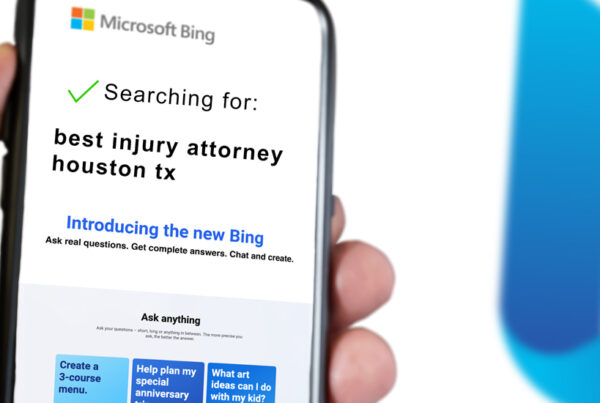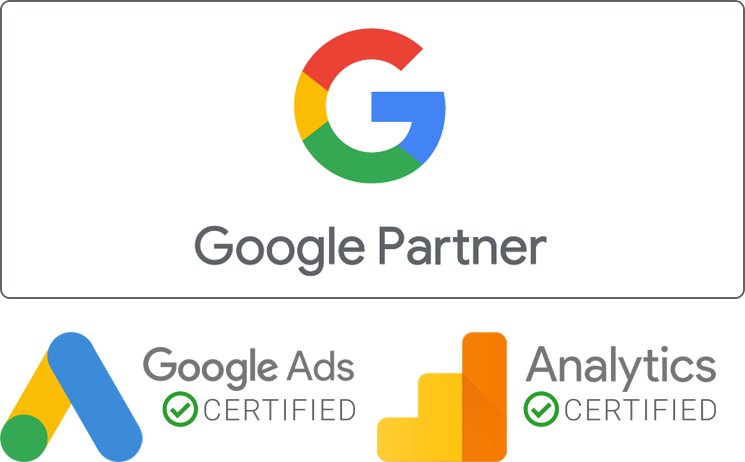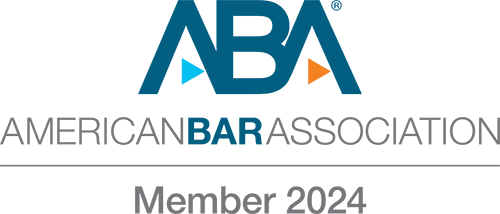Your Client Lead Generation Problem Solved.
Our process takes one-off services like PPC, SEO, Web Design, Content Marketing, CRO and others and combines them to create one simple, seamless path to growth for your personal injury firm. It provides you with a clear strategy and results, not confusion and wasted marketing dollars.
Get Found. Build Trust. Grow Your Legal Practice.

We help personal injury law firms increase their revenue and grow their legal practices through digital marketing strategies and services proven to work.
Personal Injury Digital Marketing for Lawyers
A Comprehensive Strategy to Increase Revenue by Getting More of the Cases You Want on Autopilot
When it comes to marketing for personal injury lawyers, the landscape is riddled with “try this” one-off solutions. And while some of these tips and ideas might generate sporadic leads, they fall short of the cohesive strategy required for long-term growth and success. To market your personal injury law firm successfully, you need more than a collection of one-off ideas; you need a complete marketing strategy tailored for the personal injury sector—one that is comprehensive, data-driven, and client-centric. This guide provides precisely that.
When executed correctly, the strategy covered in this guide has proven to be highly effective at generating leads for our personal injury law firm clients.
It can pave the way to sustained growth via a marketing plan that delivers consistent results, not fleeting success (or even worse, no success at all).
Digital marketing is an extremely effective way for personal injury attorneys and law firms to attract more of their ideal clients on autopilot, freeing them from the concern of where their next client will come from. It can empower them to be more selective with the clients they choose to work with and to start charging more for their services.
The Importance of Developing a Complete Marketing Strategy for Your Law Firm
The #1 mistake I see personal injury attorneys making when marketing their firm (especially online) is that they don’t have a cohesive plan or strategy.
I talk to a lot of attorneys who tell me they’re spending thousands of dollars on multiple marketing companies and online directories, all offering different “one-off” services, and that they’re just hoping that it’s all working.
What I can tell you is that getting new clients from the internet is not complicated and shouldn’t be overly expensive. It’s actually quite simple. Key to marketing your law firm successfully online is to understand that “digital marketing” is made up of many individual components.
Things like search engine optimization, pay-per-click, web design, content marketing, social media, and others. What we’ve found, is that while each of these things can potentially help you get clients from the internet, often they are completely ineffective on their own.
To beat your competitors and market your law firm successfully online you need a comprehensive strategy that works together. A strategy where every decision is intentional, every action measurable, and every investment yields a tangible step towards the growth of your law firm.
It’s time to move beyond trends, buzzwords, and one-off ideas and instead anchor your efforts in a proven, successful strategy that works.
Let this guide be your compass in the crowded world of personal injury marketing.
In this guide, I cover our “4 pillar” process to personal injury digital marketing. It is broken down into 10 simple and actionable steps, that when done correctly, has proven to be extremely effective in getting personal injury law firms more of their best clients.

Our “4 Pillar” System for Marketing Your Personal Injury Law Firm
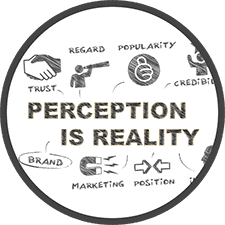
Pillar 1
Branding & Content Strategy
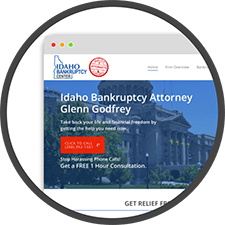
Pillar 2
Your Website

Pillar 3
Visitors and Website Traffic
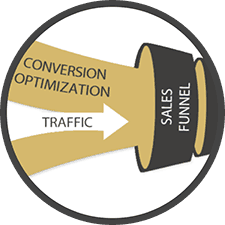
Pillar 4
Conversion Rate Optimization (CRO)
Our 4 Pillar System Broken Down into 10 Actionable Steps
1. Understanding the Nuances of Personal Injury Marketing
When it comes to marketing for personal injury attorneys, there are specific nuances and considerations that differ from other areas of law. Understanding and effectively navigating these nuances is critical to a successful marketing strategy. Additionally, things like competitor analysis can make a significant difference in the outcome.
Understanding the needs of your target audience is vital in personal injury marketing. Potential clients in need of a personal injury attorney are often in a vulnerable and stressful situation, so it’s important to tailor marketing efforts to address their specific concerns and provide reassurance and support. Using the right tone and style of communication can make a significant difference in the success of a marketing campaign.
As mentioned above, evaluating the competition’s marketing methods is essential in order to stand out in a crowded personal injury legal services market. By understanding what other firms are doing and identifying any gaps or opportunities, personal injury attorneys can craft sales copy that sets them apart and converts more prospective clients into cases for their firm.

Actionable Step: Look at your competitors websites.
What are they saying, what are they not saying? Often times you’ll find attorneys who are simply bragging about themselves. This does not help to convert prospective clients. Instead, focus your messaging and sales copy around helping your prospective client. Remember, you should always be selling the result, not the legal service.
2. Identifying Your Ideal Client’s Questions, Concerns, and Needs
To connect with prospective clients, it’s essential to understand what brings them to your door. Keyword research is a powerful tool for gaining insights into the search behavior of your ideal clients. By identifying the terms and phrases that individuals use when searching for personal injury legal assistance after an accident or injury, you can craft an online presence that aligns with their needs.
Begin by utilizing keyword research tools to discover the most searched-for terms related to personal injury law. These tools can provide data on search volume, competition, and trends. This data should guide your content strategy.
Actionable Step: Use keyword tools to begin developing an overall content and online strategy.
You can then use free tools like Ahrefs Keyword Generator to find keywords and content that your prospective clients are searching for. You can also start typing something like “personal injury lawyer…” into Google and you will see suggested search results. This is a good indicator of what your prospective clients are searching for. You can also scroll down on the first page of Google’s search results where you will see “People also ask” with more ideas you can use.
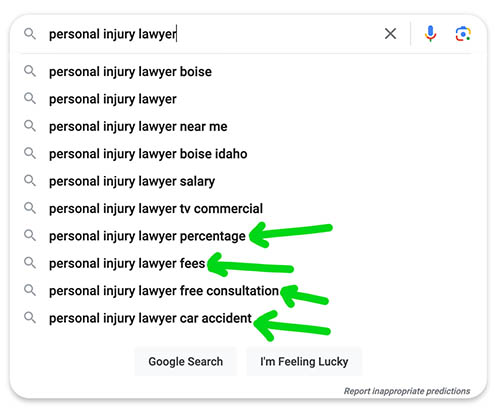
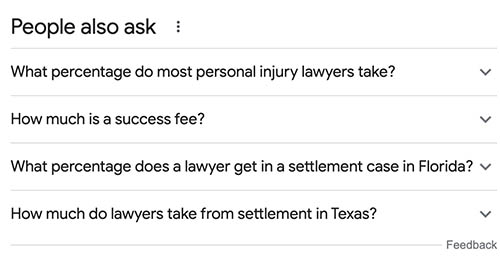
3. Developing a Comprehensive Marketing Strategy and Setting Goals
Developing a comprehensive marketing strategy is essential for personal injury law firms aiming to attract more clients and establish a dominant online presence. But, as I mentioned before, many law firms make the mistake of not having a unified strategy, leading to inefficient spending and ineffective marketing efforts.
To market your personal injury firm successful online, you must understand that digital marketing is comprised of various components. Things like search engine optimization (SEO), pay-per-click (PPC) advertising, web design, content marketing, social media, and others. Each of these element plays a vital role in your success, and when used individually often do not yield effective results.
Integrating these components into a comprehensive strategy is imperative for outperforming competitors and achieving a positive return on your marketing investment.
Setting goals is also extremely important to the success of your marketing strategy. So many law firms I talk to are simply throwing money at ideas with no defined objective for measuring revenue growth and ROI.
Your goals should be specific, measurable, and achievable. For example, you may set goals for increasing brand awareness by increasing the impressions of a specific YouTube video. Another goal could be increasing prospective client leads at a specific cost per acquisition through a Google Ads campaign. Ultimately, all your goals should focus on one thing, acquiring new clients for your personal injury firm. These goals will provide a clear roadmap for your marketing efforts and will help to track the success of your campaigns.
Actionable Step: Think about and then write down your marketing goals.
Never spend money on marketing without first having a defined goal in place. What is it that you want to accomplish by investing in marketing for your firm? Double last years revenue… or triple it? How many new clients and cases would that take? The great thing about digital marketing is that it is extremely quantifiable. With your goals in mind, you can then figure out a realistic budget to get there, along with setting up tracking and milestones so that you know you’re moving in the right direction.
4. Building an Effective Website for Your Personal Injury Firm
For personal injury attorneys, your firm’s website should serve as the cornerstone of all digital marketing efforts, as it often provides the first impression to potential clients. An effective website must not only rank well on search engines but also excel at converting prospects into clients. Here’s how to create a website that achieves both.
Key Elements of Law Firm Web Design for Personal Injury Lawyers
-
- Modern, Professional, and Simple Design: Your website should communicate professionalism with a clean, user-friendly design. It should reflect your firm’s personality while being optimized for mobile devices. Avoid over-complicated features that can detract from the user experience. Simplicity in design aids in navigation and reinforces the message you want to send to your clients.
- Client-Centric Content: Every element of your website, from the structure to the content, should speak to your ideal clients. It should quickly and clearly convey the value of your legal services. Incorporating FAQs and addressing common client concerns can demonstrate that your firm is knowledgeable and prepared to assist with potential client’s specific legal needs.
-
- Build Trust through Branding: A consistent and professional brand appearance boosts credibility. Incorporate testimonials, case studies, and client stories to provide social proof of your expertise and success in personal injury law. Adopt colors and design elements that align with the emotional tone required for personal injury law—opt for strong, confident colors and visuals to emphasize reliability and determination, key in representing clients who have suffered personal injuries. Also, personalize your website with photos of your team and offices while avoiding generic stock images. This personal touch can make your firm feel more approachable and trustworthy.
- Encourage Action: Your website should guide visitors towards taking action, whether that’s making a call, filling out a contact form, or scheduling a consultation. Ensure calls to action are prominent, creating a sense of urgency and making it effortless for clients to reach out.
- Mobile Optimization: With the ever increasing use of mobile devices to search for legal services, a mobile-responsive design with features like ‘click-to-call’ buttons and easy to use contact forms are critical elements for a personal injury attorney’s website to convert prospects into paying clients.

Actionable Step: Focus on the branding of your website and what it says.
A successful personal injury law firm website should be more than a digital brochure; it should be a client conversion engine, pulling in new clients daily and weekly for your firm. By following these principles, personal injury lawyers can create a website that not only draws in ideal clients, but also engages them effectively, increasing the likelihood that they will reach out to your firm for legal assistance.
5. Search Engine Optimization (SEO) for Personal Injury Law Firms
Utilizing Search Engine Optimization (SEO) is a cornerstone of a successful digital marketing strategy for personal injury law firms. SEO is the process of optimizing a website to improve its visibility and ranking in search engine results pages (SERPs), such as Google. This is especially important for personal injury law firms, where the competition to appear at the top of search results is particularly fierce.
As discussed in our Guide to SEO for Personal Injury Lawyers, a well-crafted SEO strategy can connect a law firm with potential clients who are actively searching for their legal services. It can also help convert prospective clients by providing instant credibility when the firm’s website ranks highly on search engines as reflected in our legal services consumer survey.
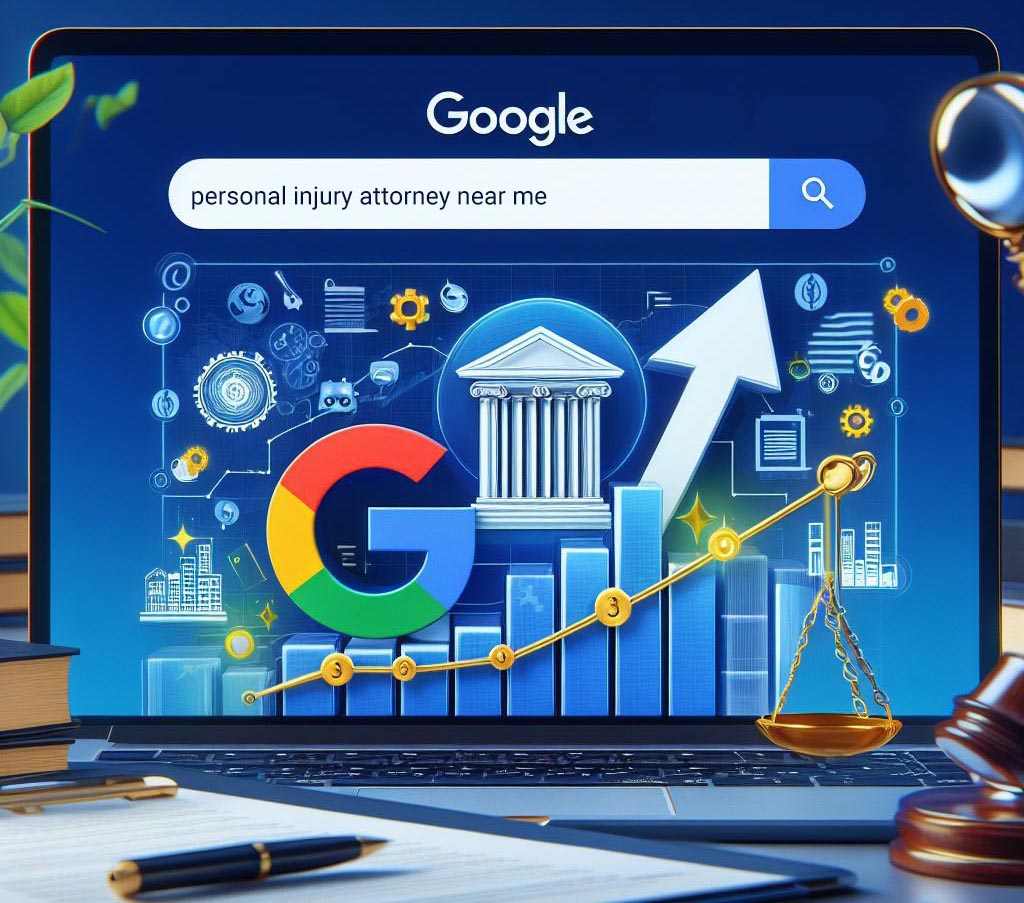
SEO: An ROI and Growth Machine for Your Personal Injury Firm
SEO isn’t merely about improving your website’s visibility; it’s about positioning your firm to be found at the exact moment potential clients are in need of your legal services. With a staggering 64% of legal service seekers starting their journey online, a robust SEO strategy can serve as your firm’s beacon, guiding those in need of your expertise directly to you.
Five Keys to a Successful Personal Injury Law SEO Campaign
 Content is King: Content creation should be the first step in any personal injury SEO strategy. High-quality content tailored to your prospective client’s needs can elevate your law firm’s search engine rankings, as it provides value to potential clients and, in turn, is favored by search engines like Google. For personal injury law firms, this means developing detailed practice area pages, informative blog posts, and helpful resources that address the specific concerns and questions of those who have suffered personal injuries. The content must be keyword researched, strategically formatted, and designed to position the firm as an authority in its local market.
Content is King: Content creation should be the first step in any personal injury SEO strategy. High-quality content tailored to your prospective client’s needs can elevate your law firm’s search engine rankings, as it provides value to potential clients and, in turn, is favored by search engines like Google. For personal injury law firms, this means developing detailed practice area pages, informative blog posts, and helpful resources that address the specific concerns and questions of those who have suffered personal injuries. The content must be keyword researched, strategically formatted, and designed to position the firm as an authority in its local market.- On-Page SEO: This involves optimizing your website’s pages through meta descriptions, title tags, image alt tags, H1 tags, and internal linking. Each of these elements helps search engines understand the context and content of your pages, improving your visibility for targeted queries. For instance, a meta description that includes “Personal Injury Attorney in [Your City] | 30 Years of Experience” can improve click-through rates from search results.
- Backlinks: Think of backlinks as votes of confidence from other reputable sites. The more authoritative websites that link to your content, the more search engines perceive your site as a credible source of information. Cultivating quality backlinks can elevate your firm’s online authority and subsequently, its search engine rankings. Personal injury law firms should aim to build these links through reputable legal directories, guest blogging, and professional networking sites.
- Local SEO: Most personal injury cases are dealt with locally, making local SEO vital. Optimize your Google Business Profile (once called Google My Business) and ensure your firm appears in reputable legal directories (Avvo, Justia and others). This increases the likelihood of appearing in the coveted local “3-pack” on Google, directly translating to higher visibility and increased new client inquiries. Furthermore, personal injury law firms can optimize their website by creating “local landing pages.” These are pages that include content about the geographic areas you serve combined with practice-specific keywords.
- Analyze and Adapt: The final piece of the SEO puzzle is analysis. Track your website’s performance using tools like Google Analytics and Google Search Console to understand how users find and interact with your site. Adjust your strategies based on this data to continually refine and improve your SEO efforts.
Conversions (i.e. new clients): The True Measure of SEO Success
While metrics like traffic and keyword rankings are important, the ultimate barometer of your SEO success is client acquisition. Your SEO investment should translate into a consistent stream of new clients, that is the true measure of how effective your online marketing efforts really are.
Actionable Step: Focus on content and backlinks.
While your SEO strategy should be comprehensive, that doesn’t mean it should be complicated. The two things that move the needle when it comes to search engine rankings are content and backlinks. This is what you should be investing in and focused on. Content should be very high quality with a specific purpose (mainly it should address your ideal clients questions and needs). The same is true with backlinks, they too should be high quality (i.e. from reputable websites that make sense to be linking to you).
6. Pay-Per-Click Advertising (PPC) for Personal Injury Attorneys
Pay-Per-Click (PPC) advertising is an essential component for personal injury law firms looking to enhance their online marketing strategy. PPC offers a direct approach to place your law firm in front of potential clients who are actively seeking legal services. Unlike traditional marketing methods, which can be passive, PPC is a proactive strategy that targets specific individuals based on their search queries. Law firms can strategically bid on keywords related to personal injury cases, ensuring their advertisements appear to users who are actively seeking out their services.

Getting New Clients Quickly for Personal Injury Firms
PPC allows you to buy visits to your website through platforms like Google Ads, with the cost justified by the value of the business it brings. The immediacy of PPC is one of its most significant advantages. While SEO and content marketing efforts are vital for long-term growth, they take time to mature. PPC, on the other hand can start driving potential clients to a law firm’s website almost instantly. But keep in mind that for a PPC campaign to be effective, it must start with a conversion-optimized website. This means the site must be professional, navigable, and rich with engaging content that compels visitors to take action. PPC landing pages should be targeted and relevant to the advertisements clicked, reducing the bounce rate and increasing the likelihood of conversion.
Keyword Strategy: A Critical Element of Success in PPC Advertising
The success of a PPC campaign hinges on keyword selection. Opting for the right keywords ensures that your ads are displayed to those seeking the exact services you offer. The goal is to bid on highly relevant and intent-driven keywords that are specific to personal injury law, such as “personal injury attorney [Your City]” rather than broad terms like “lawyer.” Utilizing negative keywords is also critical to filter out irrelevant traffic and reduce wasted ad spend. Also, employing keyword matching options, from broad to exact match allows you to control how strictly targeted your keywords are.
Google Local Service Ads (LSA): A New Tool for Personal Injury Law Attorneys
Google Local Services Ads (LSAs) offer a unique advantage for personal injury attorneys. This is a platform completely separate from traditional Google PPC Ads. These ads are positioned above traditional PPC and charge only for leads rather than clicks. The “Google Screened” badge associated with LSAs also adds a layer of trust and credibility to your firm.
Google Local Service Ads for attorneys can instantly increase your online visibility by placing you at the top of Google search results (even above the standard pay-per-click ads). This makes it possible for you to be listed on page 1 of Google up to 4 times now. The LSA position, standard PPC position, Google Maps (sometimes called the “3 pack”), and the regular organic search results.
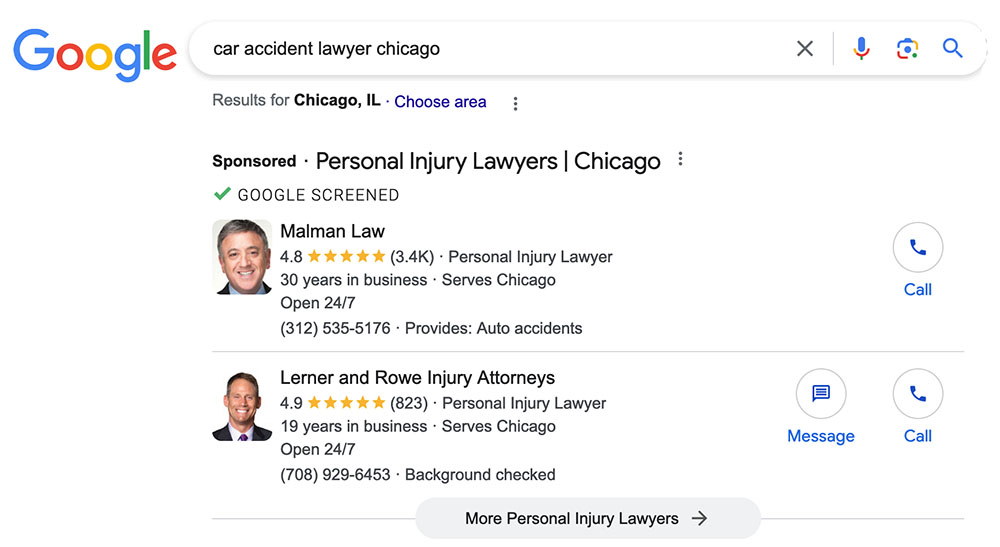
Crafting a PPC Campaign for Your Law Firm
Here are the fundamental steps to craft an effective PPC campaign for your personal injury law firm:
- Goal Definition: Clearly define what you aim to achieve, whether it’s raising your firm’s brand awareness or driving client consultations (or both).
- Audience Understanding: Understand the questions, concerns, and needs of your ideal clients is important here. They are likely searching google for keywords like “do I need a lawyer for a car accident that wasn’t my fault”. Understanding this will help to create ads that resonate with them and promote action.
- Ad Development: Your ads should be succinct, clear, and include a compelling call-to-action, positioning your firm as the solution to your ideal client’s needs. Also, Google rolls out new campaign options from time to time and these can be extremely powerful if you take advantage. One example is Google’s recent “Performance Max” campaigns. These give you the ability to use video ads and reach potential clients across more of Google’s platforms (like YouTube) in a simple and streamlined way.
- Landing Page Optimization: Ensure that landing pages are highly relevant to your ad content, easy to navigate, and designed to convert. For example, don’t send someone who does a search for “car accident lawyer near me” to a general page about your personal injury services. You need your landing pages to be much more specific than that, or else your conversion rates will go down. If someone searches “car accident lawyer near me” you should be sending them to a page specifically about your car accident and insurance claim legal services. That page should also talk about your specific experience with car accident insurance laws and any successes along with client testimonials to back that up.
- Setting Your Budget: When setting a PPC (Pay-Per-Click) budget for personal injury attorneys, it’s crucial to recognize that this niche involves some of the most expensive keywords in legal marketing. This high cost is a direct consequence of the competitive nature of the field, where numerous firms vie for prominent visibility in search results. Given these steep expenses, having clear, defined goals is essential in crafting a successful budget strategy. Goals might include increasing website traffic, generating more leads, or directly driving consultations and case sign-ups.
Measuring Success
Equally important to setting your budget is the vigilant monitoring of the campaign’s conversion rate. This metric is a vital indicator of how effectively your ad spend translates into desired actions, such as form submissions or phone calls from potential clients. A healthy conversion rate suggests a good alignment between your ad messaging, keyword selection, landing page, and the expectations of your ideal clients. Keeping a close eye on this rate is not just about adjusting bids or tweaking ad copy; it’s about understanding the return on investment (ROI) of your PPC efforts.
A well-managed PPC campaign, even in the costly arena of personal injury law, should ideally lead to a favorable ROI, where the cost of acquiring a client is significantly outweighed by the revenue generated from their case. This careful balance between expenditure and returns highlights the importance of strategic budgeting as part of a complete digital marketing strategy.
Actionable Step: Focus on conversions.
While personal injury keywords are some of the most expensive in legal marketing, when executed with attention to detail and a focus on conversions, PPC can still be an absolute game-changer for personal injury law firms looking to grow their client base rapidly.
7. Social Media Marketing for Personal Injury Lawyers
For personal injury attorneys, social media platforms are not just marketing tools; they are communities where real-time conversations provide an opportunity to demonstrate expertise, offer compassion, and build trust with potential clients. Engaging effectively on these platforms requires a strategic approach, focused on thought leadership and authentic interaction. By sharing valuable insights into personal injury law, such as explanations of the claims process, advice on what to do after an accident, and updates on changes in legislation, lawyers can establish themselves as authorities in their field and geographic service area.
The essence of social media for personal injury lawyers is to provide a blend of empathy, expertise, and evidence of success. These narratives not only serve as social proof but also help to humanize the attorney, making them more relatable and approachable. When potential clients see others who have navigated the personal injury process successfully, it instills confidence and trust in the attorney’s ability to handle their case.




It’s important to recognize that social media marketing is about dialogue. Personal injury attorneys must prioritize responsiveness—answering questions, commenting on relevant threads, and acknowledging messages. This two-way communication builds rapport and demonstrates their commitment to potential clients. While this strategy may be more time-consuming, it fosters long-term relationships and community presence, making it more of a branding play (as opposed to more direct lead generation).
Furthermore, it’s important for personal injury attorneys to weigh the return on investment (ROI) of their social media marketing efforts. Many lawyers invest significant time in generating leads through social media, yet often find that the ROI does not justify the effort.
This underscores the importance of a balanced strategy that evaluates the effectiveness of each channel to attracting quality leads. While social media can be a powerful tool for building connections and demonstrating expertise, lawyers should be mindful of the time and resources spent, ensuring they align with overall marketing objectives and lead to meaningful engagements with potential clients.
Actionable Step: View social media marketing as a long-term play.
To successfully market your personal injury law firm on social media, you’ll need to engage with your followers, answer their questions, and build their trust. It’s a more time-consuming marketing endeavor that typically pays off over the long run as opposed to getting new clients quickly.
8. Content Marketing and Blogging for Personal Injury Law Firms
Content marketing and blogging are indispensable tools for personal injury law firms aiming to reach more potential clients and establish their position as an expert in their geographic service area. These strategies involve creating and disseminating valuable, relevant, and consistent content to attract more prospective clients to their website and generate more leads for their law firm. For personal injury attorneys, this means crafting content that resonates with individuals who have experienced personal injury and are seeking legal assistance.
Crafting a Client-Centered Content Strategy
To truly engage and convert, your content must speak directly to your ideal clients. This means understanding their challenges and offering real solutions. Create blog posts, infographics, and videos that address specific personal injury law concerns, like “Do I need a lawyer for a car accident that wasn’t my fault” or “Things to know about car accident insurance claims in [Your State].”

The Importance of High-Quality Content
In the world of legal services, particularly personal injury, providing valuable, accurate, and empathetic content is one of the big things that can set you apart from your competitors. It positions you as not just an attorney but as an advocate and guide through a very challenging time for your prospective clients.
High-quality content is the cornerstone of increasing organic traffic, establishing authority, building trust, and most critically, signing more clients.
Leveraging SEO through Content
For your content to reach the people who need it, it has to be discoverable. This makes optimizing for search engines a must. Use keyword research tools to understand what terms your potential clients are using and tailor your content accordingly. Remember, Google rewards content that aligns with users’ search intent, so focus on creating content that answers their most pressing questions relating to personal injury law.
Enhancing Brand Awareness and Conversions with Sales Copy
Your content should be an extension of your brand. It should communicate your firm’s unique approach to handling personal injury cases. Are you collaborative and empathetic? Are you aggressive and results-oriented? Use your content and sales copy to reflect these brand qualities. Furthermore, well-crafted content and sales copy improves brand sentiment and helps convert readers into clients by showcasing your expertise and approachability.

Actionable Steps For Great Personal Injury Law Content Creation
- Define Your Audience: Who are your ideal clients? This involves understanding the specific needs, pain points, and questions that potential clients may have. Personal injury attorneys can derive insights from previous case inquiries and client feedback.
- Keyword Research: Use keyword research tools such as Moz Keyword Explorer and Ahrefs Keyword Generator to find the terms your clients are searching for. Craft your content around these terms to ensure visibility.
- Content Types: Develop comprehensive service area pages that detail your specific services (such as car accidents, medical malpractice, wrongful death, etc.). For optimal SEO results, consider breaking those down even further into location-specific pages if you serve multiple communities or geographic areas.
- Blog Posts: Regularly update your blog with detailed posts about specific aspects of personal injury law. For example, delve into the specifics of slip and fall cases within your state or provide insights on how to deal with insurance companies following a vehicle accident.
- Formatting for Readability: Make sure your content is scannable and accessible. Use headlines, bullet points, and images to break up text and draw the reader’s eye to important information.
Conversion Rate Optimization
The ultimate measure of your content’s success is its ability to convert visitors into clients. Your website should not only attract visitors with engaging content but also guide them towards contacting your firm. Ensure each piece of content, page, or blog post has a clear call-to-action, whether it’s to read another article, sign up for a newsletter, or schedule a consultation.
Maintaining Your Blog
A blog is a powerful tool to enhance your firm’s SEO and demonstrate your knowledge, experience, and expertise. It’s also a great platform to answer specific questions potential clients might have.
Google knows that when somebody is searching for a personal injury attorney, they are looking for two things, a specialist with experience. In fact, 58% of people in a recent survey we conducted said that the most important factor to them when deciding on an attorney to hire is for the attorney to “specialize” in the area of law they are seeking help with.
By maintaining a blog that covers personal injury law in your geographic area you are signaling to both Google and your prospective clients that you are an experienced specialist without ever having to say so. Regular blogging shows that your firm is active and engaged with current personal injury issues, which can build even more trust with potential clients.

By regularly updating your blog with fresh, relevant content, law firms can improve their search engine rankings, driving more organic traffic to their website. Moreover, sharing these blog posts on social media platforms can increase their reach and engage with a wider audience as well.
Actionable Step: Don’t ignore your blog and website content.
Your content should help your potential clients answer questions while feeling understood and supported. By creating client-centered, SEO-driven content, you can build a strong online presence that not only ranks well in search engines, but also helps convert prospects into paying clients. It’s not just about being seen—it’s about being seen as a trusted personal injury expert.
9. Online Reviews and Reputation Management for Personal Injury Firms
Online reviews are a very important aspect of your digital presence, reflecting not just your service quality, but also significantly impacting your firm’s brand and client acquisition potential. Our research indicates that 80% of potential clients scrutinize online reviews before selecting an attorney. This holds true even when clients are referred by trusted friends or family, showcasing the essential role of positive reviews in the marketing and branding efforts for personal injury law firms.
Enhancing Search Rankings through Reviews
Search engines like Google prioritize businesses with consistent reviews across various platforms, including Google, Yelp, and Facebook. These reviews can bolster your local search engine rankings and improve visibility in Google Maps listings, which is crucial for clients searching for personal injury legal services in their vicinity.

Optimizing your Google Business Profile and requesting reviews to it is one of the biggest quick digital marketing wins you can get.
Improving Conversion Rates with Positive Online Reviews
Reviews serve as social proof, reassuring potential clients of the quality of your service. Harvard Business Review reported that a one-star increase in a business’s rating on a platform like Yelp lead to a 5-9% increase in their revenue, underscoring the need for a positive online presence.
Again, in our own survey, 80% of people said they would seek out and take into consideration an attorney’s online reviews before hiring them.
Generating More Online Reviews
Proactively soliciting reviews is vital. Personal injury attorneys should encourage satisfied clients to share their positive experiences by following up with an email linking directly to the firm’s Google review page. Utilizing tools like BirdEye for law firms and Podium for lawyers can make this process easier and more efficient, allowing for streamlined collection and management of online reviews.
Proactively Addressing Negative Feedback
While positive reviews can elevate your firm’s appeal, negative feedback should not be ignored. Addressing such feedback professionally and swiftly can mitigate damage and demonstrate your firm’s dedication to client satisfaction and commitment to continual service improvement.
Actionable Step: Proactively solicit reviews from satisfied clients.
Your online reviews and reputation management are as influential as the legal outcomes you secure for your clients. By actively managing online reviews, personal injury attorneys ensure that their digital footprint robustly and accurately represents the exceptional legal services they provide. This will bolster the firm’s reputation, and aid in the acquisition of quality leads and ultimately new clients.
10. How Personal Injury Law Firms Can Track and Measure the Success of Their Marketing Efforts
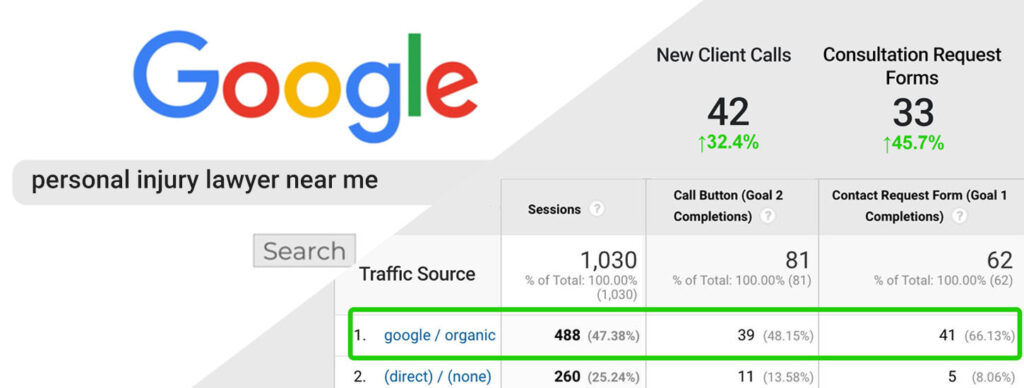
One of the great things about digital marketing is that it is extremely simple to measure and track results. Unlike other traditional forms of legal marketing, you can easily measure the return on investment from your digital marketing efforts.
Not only that, but by tracking your digital marketing campaigns, you can more easily grow your legal practice by investing more into what is working.
For personal injury firms, the true measure of digital marketing success lies not just in traffic and search engine rankings, but in converting prospects into clients. Here’s how to ensure that your digital marketing campaigns are successful and ROI positive:
Tracking Results of Your Digital Marketing Campaigns:
- Utilize Google Analytics: Google Analytics is a cornerstone tool for tracking website performance. It provides insights into user behavior, traffic sources, page views, and time spent on site. For personal injury lawyers, it can reveal which content resonates with prospective clients, how they navigate your website information, and what drives them to contact your firm.
- Call Tracking: Tools like CallRail and WhatConverts can attribute phone calls to specific digital marketing efforts, enabling you to see which ads, keywords, or campaigns are generating calls. This is particularly valuable for personal injury attorneys, as bidding on PPC keywords can be particularly expensive, and these tools can pinpoint which marketing activities are leading to the most client consultations.
- Conversion Tracking: Beyond calls, it’s essential to track other forms of conversions, such as contact form submissions, newsletter sign-ups, or ebook downloads. This helps in understanding which calls to action are effective and should be optimized for better performance.
- Understanding the Data: Data from marketing analytics tools should inform all of your marketing decisions. For instance, if a certain blog post about trucking accidents is driving significant traffic to your website, it may be beneficial to increase content in that area or run a targeted ad campaign for “truck accident lawyer” keywords.
- Setting Up Goals: Within Google Analytics, set up specific goals to track conversions. This could include tracking how many visitors fill out a contact form after reading an article on car accident insurance claims or how many use the click-to-call button on mobile.
- Analyzing User Flow: Use Google Analytics to examine the user flow through your website. This will show you where users are dropping off and where they’re engaging the most, providing critical information for improving the user journey and increasing conversions.
- Measuring ROI: With a clear understanding of which marketing efforts lead to client inquiries, you can calculate your return on investment (ROI) more accurately. This allows for smarter allocation of your marketing budget and resources.
- Regular Review and Adaptation: Marketing your personal injury law firm should not be “set-it-and-forget-it.” Regularly reviewing the data from your tracking tools to adapt and refine your strategies is critical to a successful marketing campaign. This could mean reallocating budget, tweaking ad copy, or redesigning landing pages for better performance.
Actionable Step: Do not invest in marketing without first having a plan to track and measure your results.
Tracking and analyzing your marketing results is essential to understanding and enhancing your law firm’s online presence and marketing performance. Tools like Google Analytics and CallRail offer powerful insights into the effectiveness of your digital marketing campaigns. This can enable you to optimize your strategy and ultimately acquire more clients at a better cost-per-acquisition.
Personal Injury Marketing: In Summary
Successfully marketing your personal injury law firm does not happen by chance, but instead through strategic design. This guide has offered a comprehensive roadmap, presenting our proven “4 Pillar” system. The pillars—branding and content strategy, website optimization, traffic and visibility enhancement, and conversion rate optimization—are not standalone entities but interlocking components of a cohesive system.
By embracing this comprehensive and holistic approach, personal injury attorneys can attract and retain more of their ideal clients on autopilot. When these 4 pillars are implemented correctly, it ensures that your marketing efforts are not a gamble but instead a calculated effort yielding a consistent and predictable flow of high-value cases.
To beat your competitors and market your personal injury law firm successfully online, you need a comprehensive strategy that works together.
By focusing on and implementing these four pillars, you will have exactly that. You can now be in front of potential clients 24/7 365 days a year as they are seeking help for their personal injury legal matters.
It’s amazing to see that even today the vast majority of attorneys and law firms are still not implementing a complete digital marketing strategy like this, leaving a ton of opportunity for those who do. You will no longer have to spend time trying to find new clients or compete on price because you don’t have enough clients.
This can empower you to start charging more for your services and being more selective with the clients you choose to work with. Not having to constantly think about where your next client will come from will give you more time to focus on the business of your legal practice, enabling you to grow it at the pace that you want.
About the Author
Chris is a legal marketing consultant who has been helping attorneys and law firms grow their revenue and scale their legal practices for the past 13 years. His areas of expertise are in content marketing, search engine optimization (SEO), pay-per-click (PPC), digital PR & branding, and conversion rate optimization (CRO).
More Personal Injury Marketing Tips & Ideas

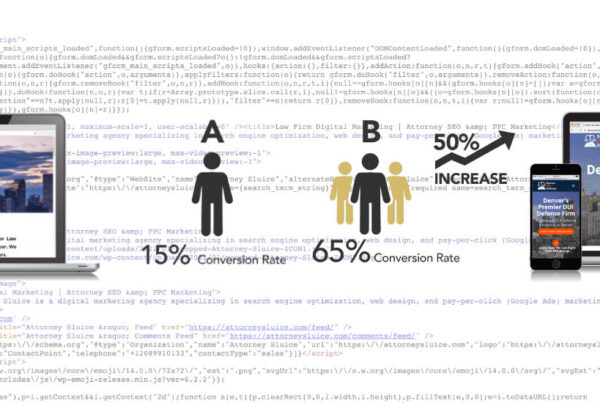
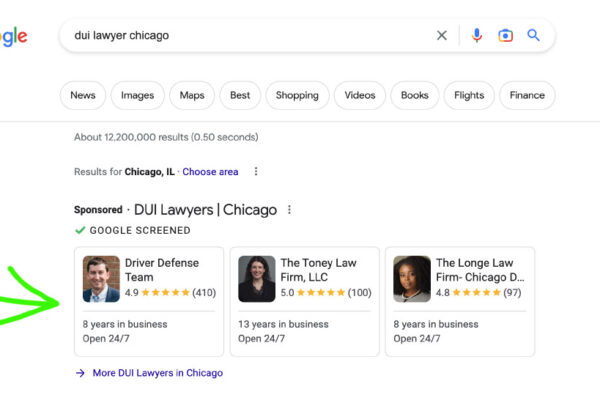
Ready to Start Growing Your Personal Injury Law Firm?
Schedule a FREE Strategy Session
What your strategy session will be focused on:
- In-Depth Digital Presence Analysis: Discover how your current online footprint measures up and how to enhance it.
- Competitor Analysis: Uncover what your competitors are doing and how to outperform them.
- Branding & Conversions Analysis: Understand how to not just attract traffic, but convert it into paying clients.
- Expert Second Opinion: Get a fresh perspective on your current marketing strategies and their effectiveness.
- Comprehensive Q&A: Receive personalized answers to your questions, offering clarity and strategic direction for your law firm’s digital marketing efforts.



